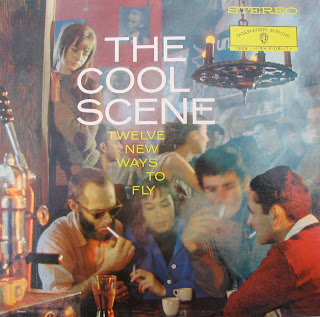
 Vampyros Lesbos is a 1971 film directed by Jesus Franco. It's an erotic horror tale inspired by Bram Stoker's novel Dracula. The main character, Linda Westinghouse (played by Ewa Strömberg), is a young lawyer who travels on a job assignment to an island where she meets the mysterious young and beautiful countess Carody (Soledad Miranda).
Vampyros Lesbos is a 1971 film directed by Jesus Franco. It's an erotic horror tale inspired by Bram Stoker's novel Dracula. The main character, Linda Westinghouse (played by Ewa Strömberg), is a young lawyer who travels on a job assignment to an island where she meets the mysterious young and beautiful countess Carody (Soledad Miranda).The film is considered by many to be one of Franco's best and a cult classic of European Exploitation film. Its score, composed by Manfred Hübler and Siegfried Schwab also gained a cult following when it was rereleased.
German composers Manfred Hubler and Siegfried Schwab (recording as Vampires' Sound Incorporation) created music sufficiently groovy and go-go to accompany Franco's freaked-out vision. Their crazy sounds are a speed-hopped swinger's bash of blaring trumpet, booming trombone, slinky organ, and spacy sitar, with a beefy foundation of mod guitar, bass, and drums. Eccentrically titled instrumentals like "The Lions and the Cucumber," "Droge CX 9," and "The Six Wisdoms of Aspasia" manage to be psychedelic in the way of both the Doors' haunting rock and the Fifth Dimension's up-up-and-away pop. Music ripe for revival, Sexadelic Dance Party falls somewhere between the glorious lounge orchestrations of Esquivel and the cheap Casio-funk porn music championed by bands like the Beastie Boys. It's just one more nugget mined from the overflowing heaps of past decades' trash culture.
Vampyros Lesbos Sexadelic Dance Party
1. Droge CX 9
2. Lions and the Cucumber
3. There's No Satisfaction
4. Dedicated to Love
5. People's Playground [Version A]
6. We Don't Care
7. People's Playground [Version B]
8. Ballad of a Fair Singer
9. Necronomania
10. Kamasutra
11. Message
12. Shindai Lovers
13. Six Wisdoms of Aspasia
14. Countdown to Nowhere












 The show sounds like
The show sounds like 












